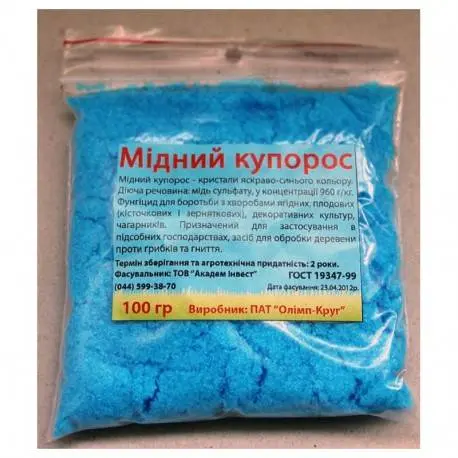Sweet and fragrant strawberries, unfortunately, are prone to many diseases and suffer from pests. Most often, we fight them in the spring or immediately after fruiting, but in vain. After all, the processing of strawberries in the fall can be carried out using fairly strong pesticides. Most of them will safely decompose into harmless elements by the time the next harvest comes.

So the time allotted to us by nature after fruiting strawberries before frost should be used with maximum benefit to fight diseases and pests, and not be limited to loosening the soil and watering.
The main pests and diseases of strawberries
Every fruit plant has its enemies. Some, such as tomatoes or strawberries, have a lot of them, you have to work hard to get a good harvest. Others, for example, irga, practically do not get sick in our conditions, and pests bypass them.
Strawberries have enough diseases, and insects ready to feast on a sweet berry before us too. But it is not difficult to deal with them (if you do not start them), and if proper agrotechnical measures are observed, you can generally reduce troubles to a minimum.
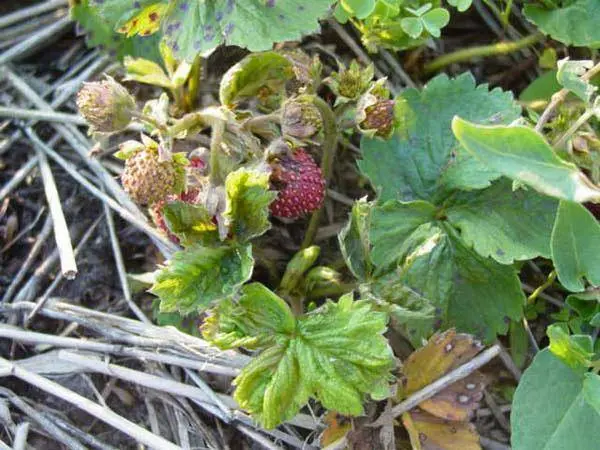
Strawberry pests
We will very briefly describe the main pests of garden strawberries so that, if necessary, you can figure out what you are dealing with.
Inconspicuous nematode
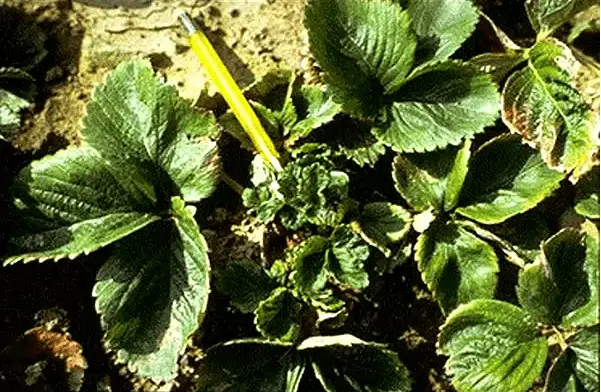
These pests are very small, almost invisible to the naked eye worms. They suck juice from strawberry cells and inject various enzymes that cause metabolic disorders. This is manifested in the swelling of leaves and petioles, the death of tissues. Due to infection with a nematode, the yield is reduced, and severely affected bushes die.
The nematode is a quarantine pest, the affected plants are burned, the soil is disinfected with lime and kept under black fallow. Strawberries are not planted in an infected area for several years.
Strawberry and spider mites
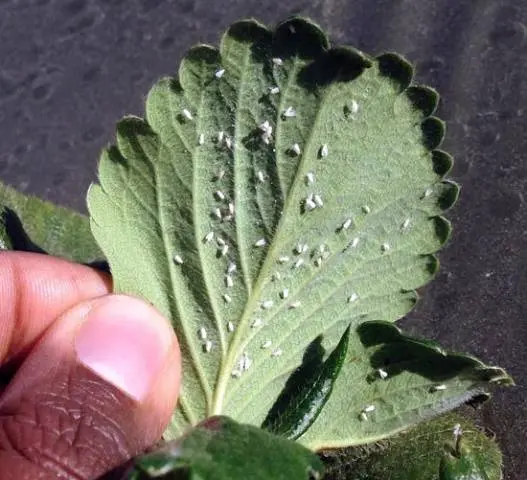
A small pest, it is easiest to examine it with a magnifying glass. The strawberry mite infects only strawberries, while many garden plants, both fruit and ornamental, suffer from the spider mite. Several generations of insects develop during the season.
Pests suck the juice from the leaves, live under a thin cobweb. With a strong defeat of strawberries, the leaves turn yellow, die prematurely.
Dolgonosiki
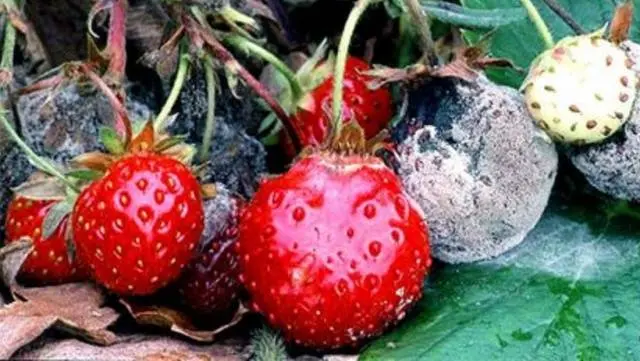
Gray root, strawberry-raspberry, flower beetle and other types of weevils are brown-gray bugs up to 6 mm long with a short proboscis. They overwinter in the ground at a depth of 3 cm, under mulch and even inside plants. White legless larvae live near the root system at a depth of 4-10 cm. At the beginning of the growing season, pests begin to eat the edges of the leaves, as well as gnaw the roots, stems, and flowers.
Caryopsis
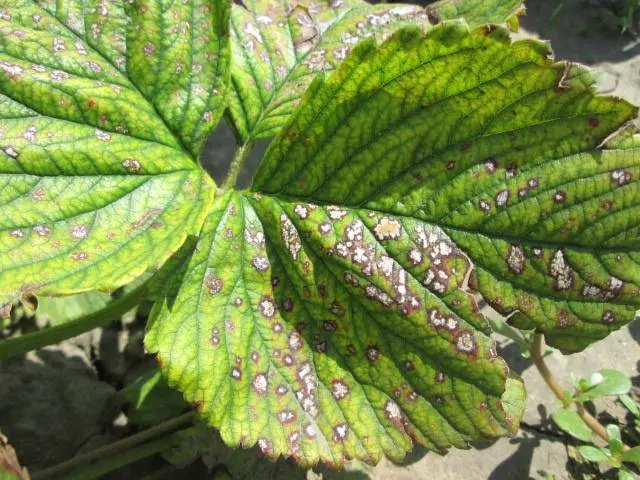
These mobile black beetles, about 1 cm in size, move to strawberries from weeds, eat its seeds and surrounding pulp, which greatly disfigure the berries.
strawberry leaflet
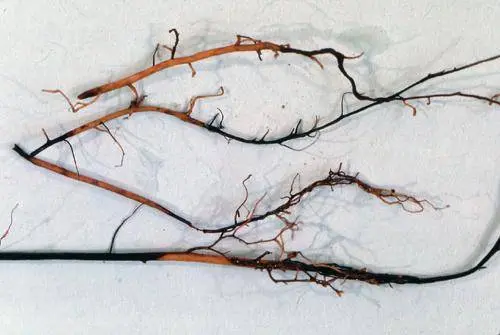
Caterpillars 0,5 cm in size, entangle the leaves with a transparent cobweb. Pests feed on greens, less often berries.
aphid
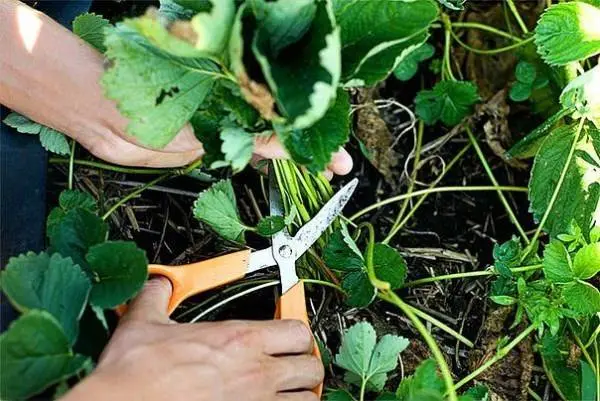
There is no person who does not know this harmful insect. There are many types of aphids that feed on the soft tissues of plants. But the main danger is that this insect is a carrier of viruses.
Slugs and snails
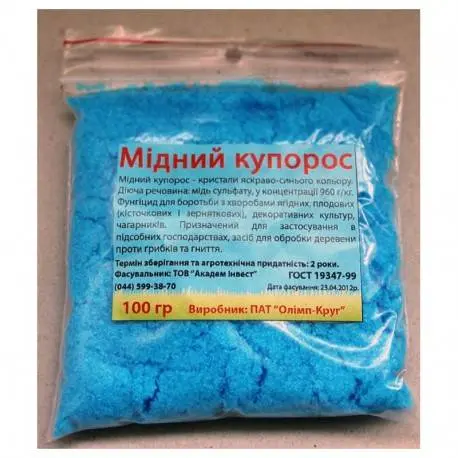
It is strawberries that suffer the most from these pests – its berries are juicy, moreover, they are located close to the ground.
Strawberry diseases
Strawberry bushes are affected by pests and also suffer from diseases.
Gray rot of berries
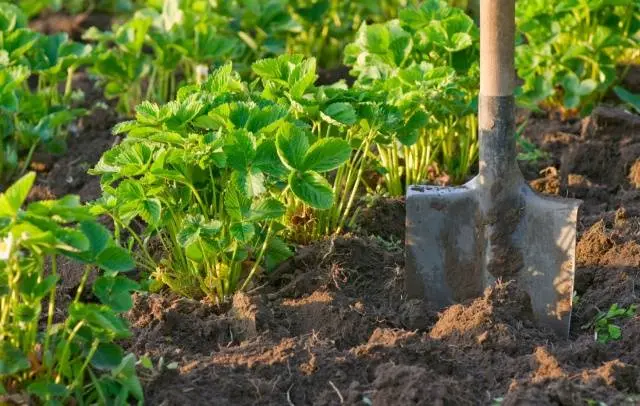
Affects many crops, including strawberries. It hibernates in the ground and on plant debris, gray rot spores are carried by wind and insects. All strawberry organs are affected, dark gray or brown rotting spots form on them. The berries are covered with a gray thick fluff, which is the causative agent of the disease.
Mučnistaâ rosa
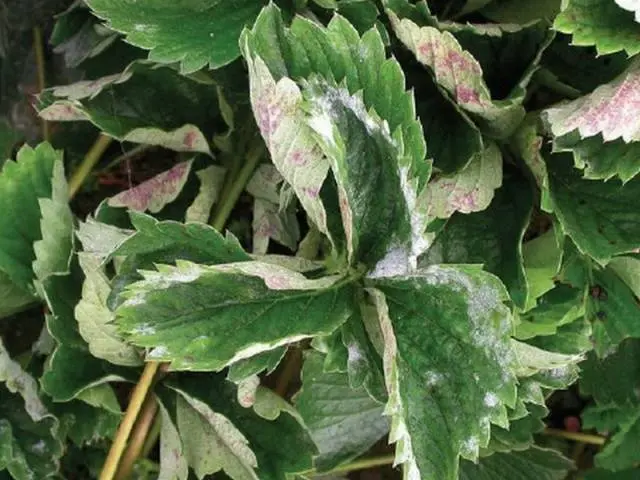
The disease affects leaves, berries, petioles, on which a white powdery coating appears. The edges of the leaves are bent up, wrinkled. In winter, the fungus remains on diseased greenery, the wind spreads its spores throughout the garden.
White spot
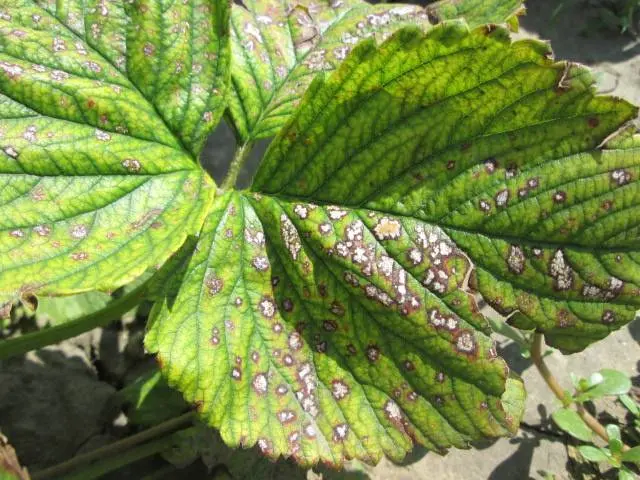
Perhaps this is one of the most common strawberry diseases. The fungus damages leaf plates, antennae, flowers, petioles, stalks. The affected areas are covered with rounded reddish-brown spots, whitening over time, surrounded by a dark red rim.
brown spot
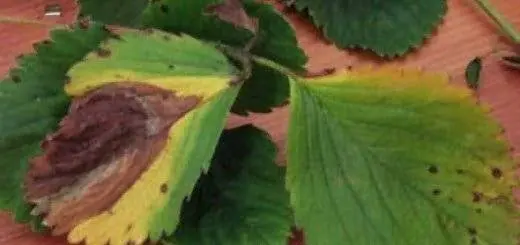
The disease develops in the second half of summer on old strawberry leaves. It looks like large rounded or veined spots, which are first red-brown, and then brown in color. The leaves appear to be dry. The disease significantly reduces the next year’s harvest.
black root rot
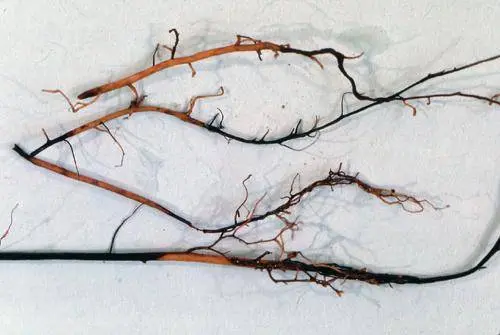
In summer, the lower leaves first turn brown and then die off. Bushes are easily removed from the ground. If you look at the roots, it turns out that the tap root is cracked, and the young roots have long died.
Viruses
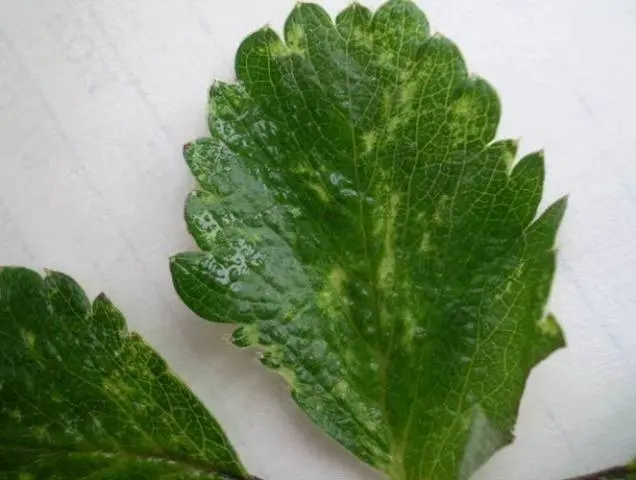
This disease is spread by aphids and can also be carried with dirty gardening tools. Most often, in the spring, a virus is active on strawberries, which causes leaf curl, in the fall it manifests itself by yellowing of the edge of the leaf plate. From spring to autumn, the mosaic virus infects strawberries, it deforms the leaves, on which yellow spots also appear.
Autumn strawberry processing
Pest and disease control on strawberries begins in the fall.
- After harvesting, with a strong infection of the plantation, we can apply chemicals without fear that the treated berry will fall on our table.
- Many pests and spores of pathogenic fungi overwinter in the ground, on bushes or among plant debris, including on mulch.
- Often in the fall we simply have more time to fight disease than in the spring, when every day is precious.
Why cut strawberry leaves in autumn
Strawberry is an evergreen plant. During the growing season, new leaves are constantly formed and grow, and the old ones die off. They are the main, and the only organs of photosynthesis, the harvest depends on them.
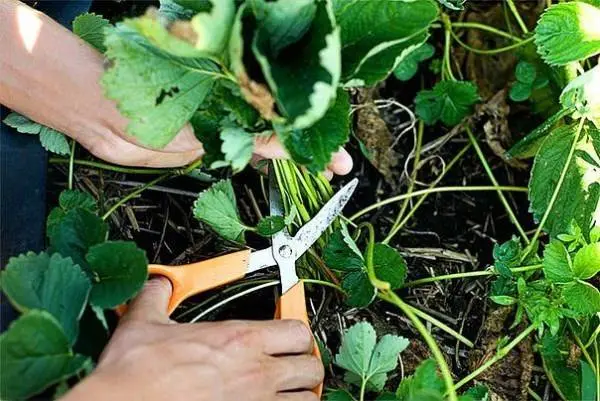
The active vital activity of the leaves depends on the phases of development, the age of the strawberry plantation. In spring and autumn, their growth is most active, in summer under the influence of high, and in winter – low temperatures, it decreases. Fungal diseases, usually brown or white spot, powdery mildew, spread on old leaves, and mites or other pests spread on young leaves. Strawberries most often suffer from the age of two.
To stimulate the growth of young leaves, as well as the relative release from pests, diseases, after harvesting, the leaves must be mowed. Remember that pruning strawberries too early, when the outflow of nutrients from old leaves into stems is not completed, is unacceptable. Plants weaken, winter poorly, and the next year’s harvest is reduced. Late pruning leads to poor flower bud formation, which occurs in the second half of August – September.
After pruning the leaves, it is necessary to carry out comprehensive measures to combat pests, diseases, tillage, and fertilize strawberries.
Pest and disease control with chemicals
Pesticides are used in the form of solutions that treat strawberries from small-drop sprayers. This is by far the most common method of combating diseases and pests.
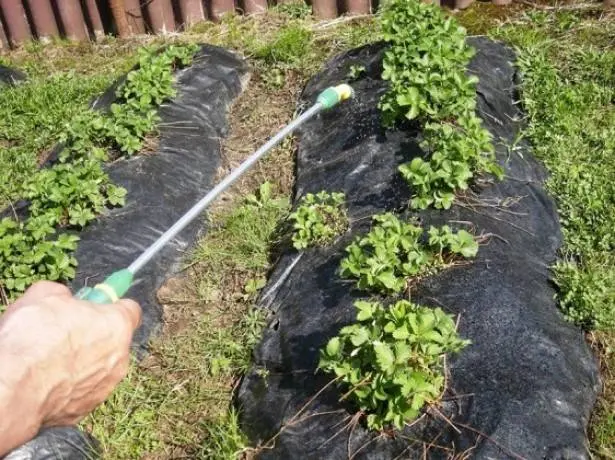
Autumn is just the time when the use of pesticides on strawberries is most safe. In order to choose the right drug, carefully monitor the berry plantation throughout the season. Record your observations as needed. We will not tell you how to process strawberries – there are many drugs, their prices are different, and the effect is approximately the same. We will give only a few recommendations.
- From ticks, use acaricides – preparations created specifically to combat this tiny insect.
- Use insecticides for bigger pests.
- Spray with contact poisons especially carefully.
- Systemic poisons act directly on the plant, the pest dies when eating its parts. But here you need to carefully read the instructions and make sure that the chemicals used are not too toxic.
- From diseases, you need to spray the plant with the appropriate fungicide.
- A very good result in the fight against both pests and diseases is the autumn treatment of strawberry bushes and soil on a plantation with any copper-containing preparation.

- Treat for pests and diseases in calm, dry weather.
- In order for the drug to work better, add 2-3 tablespoons of liquid soap to the balloon from which you are going to sprinkle the strawberries.
- Strictly follow the instructions.
- Use personal protective equipment.
Biological preparations for strawberries
A sufficient number of biological and organic preparations are now being produced to protect strawberries from pests and diseases.
- Effective microorganisms (“EM” preparations) that reduce the incidence of diseases due to the improvement of the soil.
- Phytosporin is a bacterial fungicide and biological pesticide.
- A whole squad of drugs that stimulate the plant’s own defenses, for example, Epin and Zircon.
- Other drugs for pests and diseases of biological origin: Bitoxibacillin, Aktofit, Fitoverm.
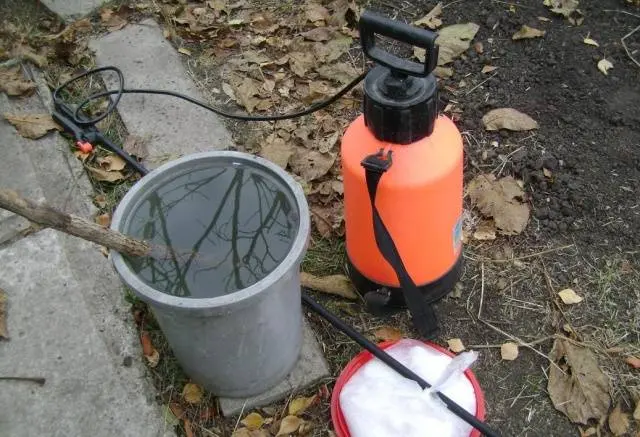
Strawberries are treated from pests and diseases with preparations of biological origin in the same way as with chemical means.
Processing strawberries with folk remedies
Even if you grow strawberries without using chemical fertilizers and preparations, folk remedies in the fall are appropriate only if there is no significant damage to the plantation by pests and diseases. In the case of more or less severe infection of plantings in the fall, it is better to use chemical or biological preparations.
As a preventive measure at the end of September, spray strawberries with the following mixture:
- 10 liters of warm water;
- 3 tablespoons of overcooked sunflower oil;
- 2 tablespoons of sifted wood ash;
- the same amount of vinegar and liquid soap.
Destruction of strawberries
Of course, this is a last resort. But with a strong infection with a nematode or virus, you will have to destroy the entire strawberry plantation. The excavated plants will have to be burned, the soil should be disinfected with lime or copper preparations. As an additional measure, it is good to leave the site under black fallow for a year, and then grow green manure on it for several more years.
Of course, if only a few bushes are infected, you can limit yourself to only destroying them. But next year, strawberries planted in this garden should be carefully monitored and sanitary measures should not be neglected.
Prevention of strawberry infection
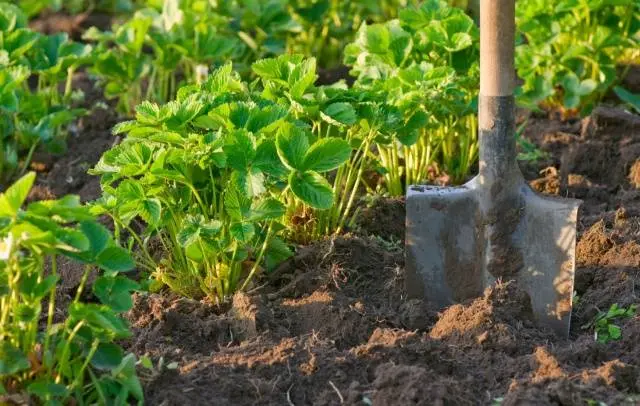
Of course, prevention is better than cure. What measures against pests and diseases can we take on beds with strawberries after cutting the leaves?
- The right choice of planting site, as well as previous plants when laying a strawberry bed.
- Use only healthy planting material.
- Timely, sufficient fertilization.
- Regular weed removal.
- Soil loosening.
- Growing strawberries in narrow beds (about 50 cm wide) makes it easier to care for them.
Conclusion
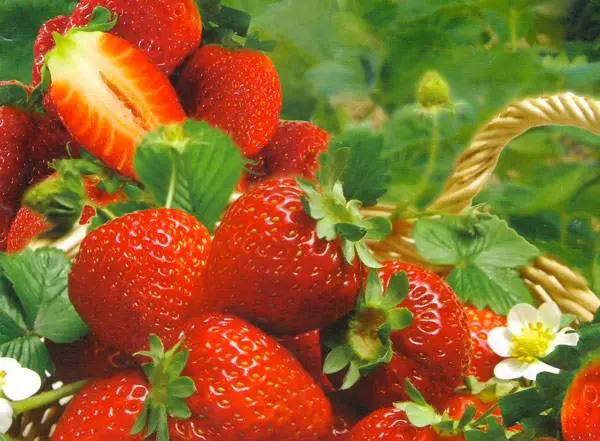
Strawberries cannot be called an easy-to-care berry. But subject to agricultural technology, it will certainly please you with a good harvest.










